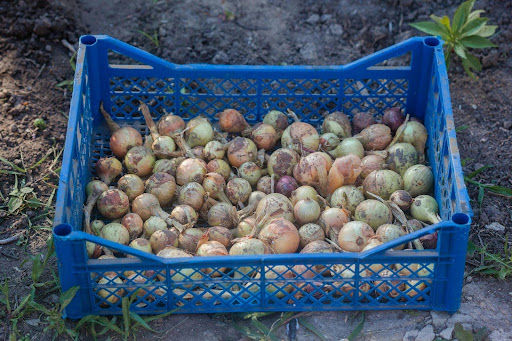SCAAT on Produce Farms When Contaminants Spill
- Phil Tocco
- Jun 24, 2024
- 3 min read
Updated: Jul 2, 2024

Port-a-johns tip. Animals get loose. Contamination happens. it’s important to think through how to manage a contamination event. One way to think through how to handle contamination is through the mnemonic SCAAT. S, Stop harvest activities. C, Contain the contaminant. A, Alert the proper authorities. A, Assess crop exposure. T, Treat the area and affected crop.
S. Stop Harvest Activities. When a contamination event happens, the first thing that all workers must do is stop harvest. Continuing harvest activities increases the chances that more produce will accidentally become contaminated.
C. Contain the Spill. Likely the person that finds the spill will not be the designated person who has to handle cleanup of contamination. It may be a long time before the right person to do the cleanup shows up. If contamination isn’t contained at least on a base level, more crop could be contaminated. Containment could be as simple as shoveling a trench around the spill so it doesn’t move further. Bigger spills may require putting straw bales around the spill to keep contamination from moving into crop or traffic areas. Having a small bag of kitty litter or other absorbent material handy in a spill kit might make this step easier.
A. Alert proper authorities. As previously stated, the person who discovers the spill might not be the right person to clean up a contamination. If a port-a-john tips, the company that owns the port-a-john is usually responsible for cleaning it up. Make sure either you or your boss contacted the company about the problem and they are on their way to fix it. Even if your boss is not the one who needs to fix the problem, let them know. If you are part of a contract crew on a farm, let the farm owner know as well. Have a list of numbers ready so that if a problem occurs you are ready.
A. Assess crop exposure. After the contamination is contained and the right people know something happened, figure out how much of the crop must be discarded or not harvested. If the area where the contamination is didn’t contaminate any crop, but might contaminate harvest equipment or workers as they travel to and from the harvest area, it’s important to mark the area so workers know to avoid it. Any crop that has contaminant on it or is within a reasonable distance to the contaminant must not be harvested. Contaminants cannot be completely washed off. Mark those areas and instruct workers to avoid harvesting them. If the crop is one that is harvested multiple times in a season, the crop must not be harvested in subsequent pickings.
T. Treat the area and affected crop. As mentioned earlier, you may not be the person who is supposed to treat a contamination event. If you are, you’ll want to pay attention to a few things. First, think through where you will be putting the contamination and the product it touched. Make sure that by removing the contamination, you don’t accidentally get more product contaminated. Pay attention to the tools and equipment you use. These tools should either be designated only for contamination or be cleaned and sanitized prior to being used for anything that contacts food.
Thinking through problems before they happen is the only way to prepare for them. It improves outcomes and will help you sleep at night. If a grower has specific questions about contamination response or has difficulty tailoring GAPs to their farm, they are welcome to contact the Agrifood Safety Work Group at gaps@msu.edu or (517) 788-4292.
Article by Phil Tocco, MSU Extension


